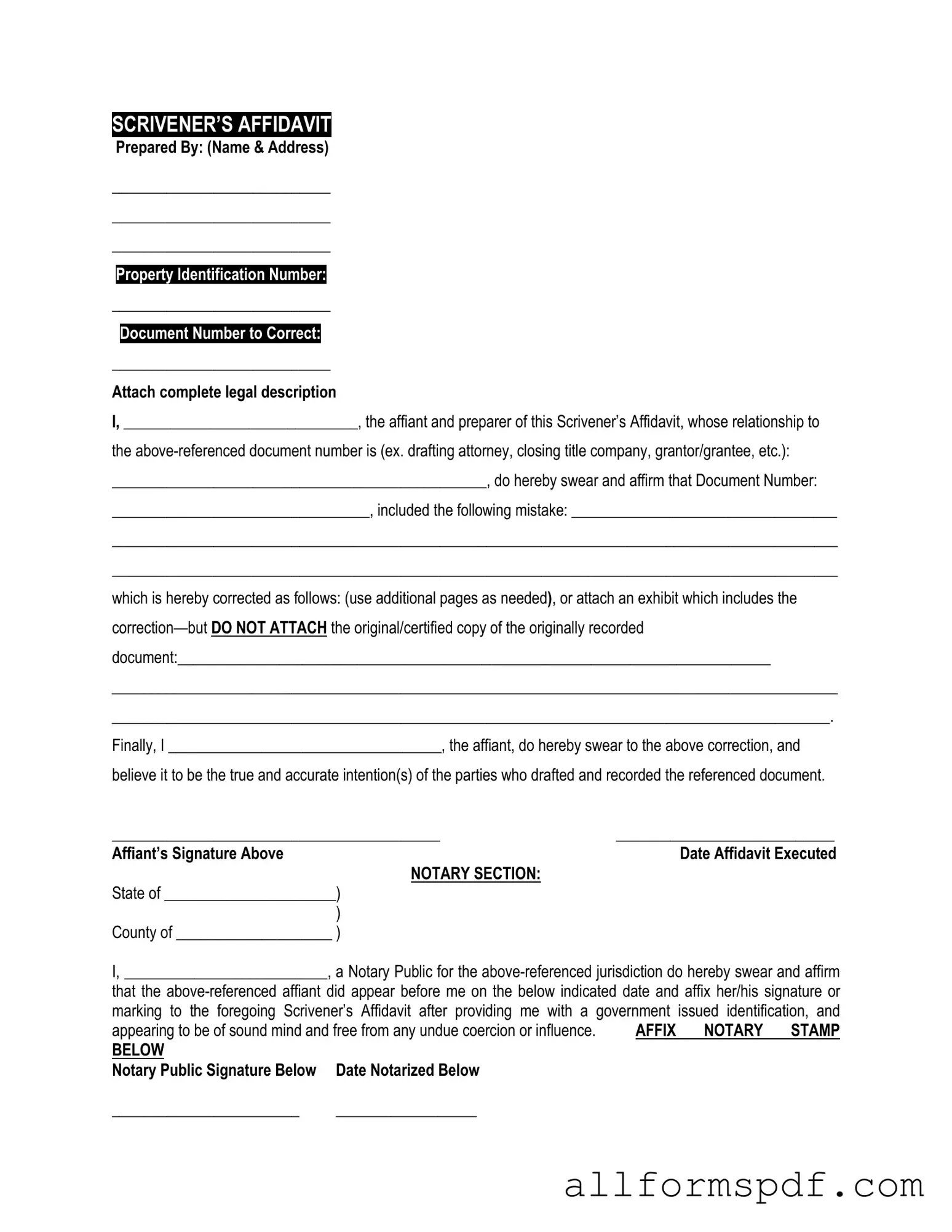Fill Out Your Scrivener's Affidavit Form
The Scrivener's Affidavit is a legal document used to clarify and confirm the accuracy of information contained in another document, often related to real estate transactions. This affidavit serves as a vital tool for ensuring that all parties involved have a clear understanding of the details presented. Understanding its purpose and proper usage can help prevent misunderstandings and legal complications down the road.
Create My Scrivener's Affidavit Now
